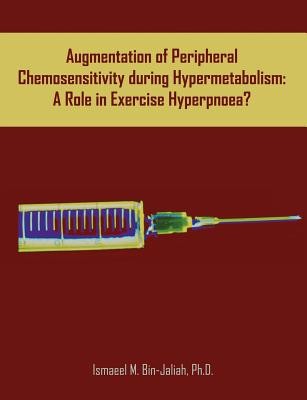
- We will send in 10–14 business days.
- Author: Ismaeel M Bin-Jaliah
- Publisher: Dissertation.Com. - Do Not Use
- ISBN-10: 1581123272
- ISBN-13: 9781581123272
- Format: 18.9 x 24.6 x 1.9 cm, minkšti viršeliai
- Language: English
- SAVE -10% with code: EXTRA
Augmentation of Peripheral Chemosensitivity during Hypermetabolism (e-book) (used book) | bookbook.eu
Reviews
Description
The carotid body initiates reflexes aimed principally at the homeostatic maintenance of blood gas tensions. This thesis tested the hypothesis that the carotid body is also a physiological glucosensor, with a role in mediating exercise hyperpnoea. In anaesthetised rats, insulin-induced hypoglycaemia (from ca. 6.5 to 2.8 mmol L-1) caused an ca. two-fold increase of oxygen consumption that was associated with a significant, carotid body-dependent increase in ventilation (from ca. 420 to 640 ml min-1 kg-1) without change in blood gas tensions. This hypoglycaemic hyperpnoea was associated with hypokalaemia and no alterations of ventilation or metabolism were observed in euglycaemic, control studies, thus excluding any role for [K]] or insulin. During hypermetabolism, a proportional augmentation of peripheral CO2 gain, measured from the phrenic electroneurogram during artificial ventilation, was shown to maintain the arterial blood gas status. In vitro, measurements of single-fibre chemoafferent discharge showed that low [glucose], over a physiological range and during normoxia, increased neither the carotid baseline discharge nor the CO2 sensitivity. Taken together, these results demonstrate that the carotid body is not a physiological sensor of glucose but augmentation of the carotid body chemosensitivity via an undetermined yet, hypermetabolism-related factor(s) is most likely to be involved in exercise hyperpnoea.
EXTRA 10 % discount with code: EXTRA
The promotion ends in 22d.08:20:38
The discount code is valid when purchasing from 10 €. Discounts do not stack.
- Author: Ismaeel M Bin-Jaliah
- Publisher: Dissertation.Com. - Do Not Use
- ISBN-10: 1581123272
- ISBN-13: 9781581123272
- Format: 18.9 x 24.6 x 1.9 cm, minkšti viršeliai
- Language: English English
The carotid body initiates reflexes aimed principally at the homeostatic maintenance of blood gas tensions. This thesis tested the hypothesis that the carotid body is also a physiological glucosensor, with a role in mediating exercise hyperpnoea. In anaesthetised rats, insulin-induced hypoglycaemia (from ca. 6.5 to 2.8 mmol L-1) caused an ca. two-fold increase of oxygen consumption that was associated with a significant, carotid body-dependent increase in ventilation (from ca. 420 to 640 ml min-1 kg-1) without change in blood gas tensions. This hypoglycaemic hyperpnoea was associated with hypokalaemia and no alterations of ventilation or metabolism were observed in euglycaemic, control studies, thus excluding any role for [K]] or insulin. During hypermetabolism, a proportional augmentation of peripheral CO2 gain, measured from the phrenic electroneurogram during artificial ventilation, was shown to maintain the arterial blood gas status. In vitro, measurements of single-fibre chemoafferent discharge showed that low [glucose], over a physiological range and during normoxia, increased neither the carotid baseline discharge nor the CO2 sensitivity. Taken together, these results demonstrate that the carotid body is not a physiological sensor of glucose but augmentation of the carotid body chemosensitivity via an undetermined yet, hypermetabolism-related factor(s) is most likely to be involved in exercise hyperpnoea.


Reviews